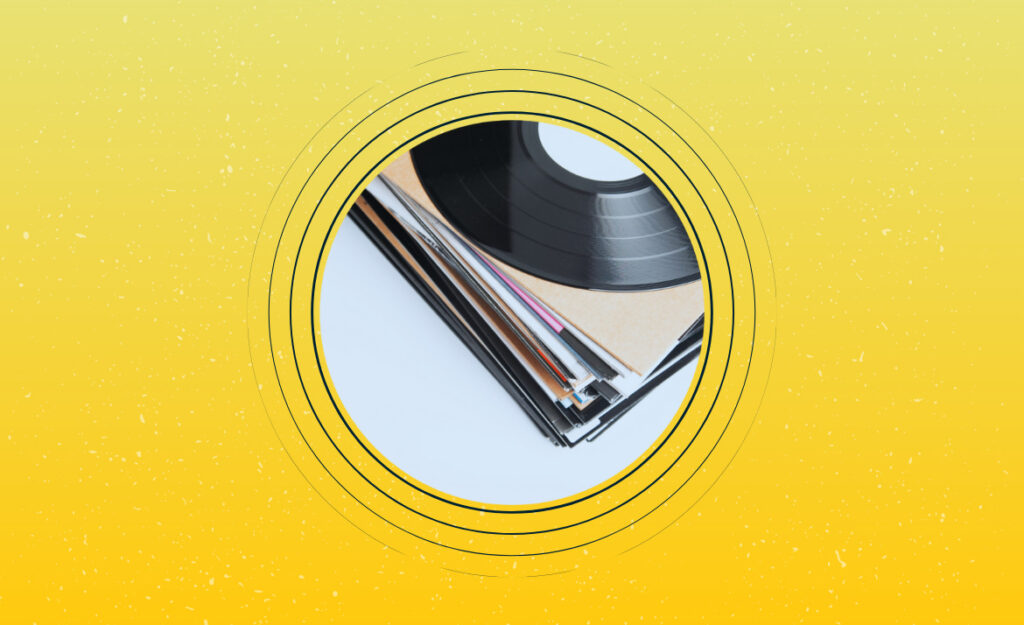
Some record collectors stack vinyl horizontally simply because it’s convenient, and that choice can go unnoticed for years. Integrating horizontal stacking vinyl into your storage routine, however, can quietly introduce risks that aren’t apparent right away.
Understanding the nuances of record storage goes beyond neatness or display. It touches preservation, playability, and long-term value—crucial elements for anyone driven by both passion and wisdom for their collection.
Dive into the key reasons collectors carefully avoid horizontal stacking vinyl and learn proactive steps to keep your records in peak condition, reducing repair costs and regret down the line.
Identifying Immediate Impacts of Horizontal Stacking on Vinyl Records
When you recognize how horizontal stacking vinyl affects the integrity of your collection, you unlock the tools to make intelligent, lasting storage decisions today. The outcome: fewer warps and less disappointment.
Every time you add another record on a horizontal pile, pressure unevenly distributes across grooves and jackets. Over time, even seemingly sturdy records show visible, sometimes irreversible, damage.
Examining Warping Through Real-Life Storage Habits
Storing ten records flat on a table looks harmless at first. A month later, the bottom record releases a slight curve and doesn’t spin true. That’s a classic warning triggered by horizontal stacking vinyl.
Picture a collector stacking new purchases in piles until they can sort them. Repeated habit compresses LPs, distorting grooves, and makes playback noisy. It starts small but quickly changes an entire stack’s fate.
The key action is to break that piling routine. Grab a single side stack that’s grown beyond four albums and re-rack it vertically. Make checking for flatness part of your weekly ritual.
The Jacket Effect: Preserving Album Art and Materials
Jacket artwork is part of every LP’s soul. Horizontal stacking vinyl presses covers beneath heavy weight, leading to ring wear, cracks, and even ink transfer. Those defects hit resale values fast.
Imagine you show a friend your favorite rare pressing, only to find a white ring ghosting the album cover. That’s a burden horizontal stacking vinyl leaves behind—easy to regret, hard to erase.
Commit to shelving LPs vertically and gently. If a jacket shows signs of ring wear, move it to the front of a display, not the bottom of a stack. Your records will thank you soon.
| Storage Method | Record Longevity | Jacket Preservation | Action To Take |
|---|---|---|---|
| Horizontal Stacking | Poor | Prone To Damage | Transition to vertical shelving |
| Vertical on Unstable Shelf | Moderate | Variable | Install firm, straight supports |
| Vertical, Supported | Excellent | Protected | Space out LPs for air |
| Loose, Leaning Groups | Fair | Stress at Edges | Add bookends or supports |
| Archival Boxes | Excellent | Minimal Wear | Upgrade to acid-free materials |
Setting Up a Storage System That Beats Flat Stacking
Adopting a sturdy vertical racking system can make a record collection last decades longer. Correct shelving minimizes pressure points and lets vinyl breathe, both critical for preventing stack-related warps and splits.
Think beyond quick fixes – invest in specialized racks or reinforced shelves. Prioritize spacing and shelf height based on your tallest record jacket. This custom approach isn’t just smart, it’s transformative for preservation.
Assessing Shelf Suitability and Building a Safer Setup
Walk over to your shelf and gently press the top. If it wobbles, add new brackets or supports. Each vibration easily transmits to LPs, especially when horizontal stacking vinyl is present.
- Change to upright organization to avoid compression, which warps both records and covers over months.
- Sort by size and weight, placing heavier box sets on lower shelves to reduce collapse risk and maintain balance.
- Install adjustable dividers to create sections every foot, so nothing leans hard or slides into a pile.
- Choose hardwood or metal platforms, resisting moisture, to keep jackets crisp and grooves safe from accidental spills or humidity shifts.
- Arrange shelves away from direct sunlight—prolonged UV rays heat the surface and, in horizontal stacks, multiply the risk of permanent warping.
Following these steps, collectors instantly spot which areas of their setup invite horizontal stacking vinyl troubles—and can correct course before damage takes hold.
Deciding When and How to Reorganize Your Collection
Shift a row of old albums off a table and onto a new shelf. By stacking vertically with dividers, you eliminate the subtle, daily weight damage that horizontal stacking vinyl delivers.
- Set aside twenty minutes weekly to re-check your storage’s vertical alignment and clear any creep toward flat piles.
- Replace aging shelves when you see sagging, preventing a domino effect where heavy stacks suddenly collapse, breaking records.
- Label shelf sections so you always know which genres or box sets are where—an organized setup reduces the temptation to resort to flat stacking for convenience.
- Encourage family or roommates to spot-check if records are being stacked flat and gently correct course when they see it.
- Document before-and-after shelf changes to track progress and spot improvements in record condition linked to less horizontal stacking vinyl exposure.
Adapting these actionable habits blocks new risks and provides a blueprint for safer, smarter record keeping across large and small collections.
Spotting Long-Term Damage Patterns and Preventing Irreversible Loss
Identifying the subtle red flags that horizontal stacking vinyl introduces is the first move toward changing old routines for good. Noticing small warps or ring wear early allows for fast intervention.
Once you’ve seen one stack collapse and heard the crack of an old favorite, the lesson sticks—vertical storage is non-negotiable for record longevity.
Monitoring Daily Habits That Sneak Damage Into Vinyl
If you lay a pile of records next to your turntable after a listening session, they’ll flatten and compress beneath their own weight. Within days, grooves show subtle deformation from horizontal stacking vinyl.
Change this habit by installing a small vertical “listening rack” near your setup, providing a home for records currently in play. Keep that spot tidy—limit it to three albums at a time.
Systematize clean-up by setting a daily phone reminder: Put away records vertically. This nips damage in the bud and shifts your environment toward lifelong safe storage habits.
Recognizing Groove Deformation in Early Stages
Slide a well-loved LP out from the bottom of a horizontal stack. If your fingers sense a slight dip across the label, or playback stutters, deformation is already underway due to flat stacking.
Compare that warped LP’s edge-on profile with one from a vertical shelf. The difference can be millimeters, but the audible impact is major—crackles, skips, or fuzzy mids all emerge from bent grooves.
Whenever you spot a bent sleeve or hear audio hiccups, move the affected album into a stable, upright position immediately and rotate its position every week until it flattens.
Proactively Rotating and Inspecting Records to Limit Risk
Regularly rotating albums within your storage system prevents repetitive pressure and prolongs the health of vinyl—even if a few have suffered from past horizontal stacking vinyl mistakes.
Schedule a monthly review to swap the order of records on your shelves, mixing in lighter and heavier titles to avoid chronic stress points in any section. This replaces risky flat stacking rituals with active, protective habits.
Creating a Simple Inspection Routine
Every collector can check each LP’s shape with a quick roll across a flat table. Lightly spin the record, searching for uneven rises. This signals past horizontal stacking vinyl storage and early-stage warping.
Make it a point to inspect both album edges and jacket corners for creasing, ring wear, or pressure marks, as these can worsen in a misaligned stack.
Document and photograph any visible changes. Keeping a record log builds awareness and helps you compare progress after transitioning to vertical-only storage approaches.
Adjusting for Environmental Factors That Amplify Risk
Humidity, heat, and stray sunlight all worsen the threats posed by horizontal stacking vinyl. In a climate-controlled space, even temporary horizontal piles become risky invitations to shape shift.
Install a room thermometer and dehumidifier near your collection and check them alongside regular shelf cleaning. If the environment stays within a safe range, records face lower odds of long-term harm.
Always avoid placing any stack—even briefly—in direct sunlight or next to heat registers. Combine these steps with storage best practices for underestimated peace of mind.
Investing in Archival Solutions to Outlast Stacking Hazards
The choice to use archival boxes or materials creates a substantial, measurable shield against the common threats that horizontal stacking vinyl introduces into home environments. Consider this an investment as much as a preservation strategy.
Archival boxes keep records upright, clean, and buffered from temperature swings. The initial effort pays dividends, whether you’re protecting rare finds or everyday favorites that you want to keep playable for years to come.
- Switch to acid-free, archival boxes for long-term storage to eliminate dust and prevent jacket staining caused by flat stacks.
- Upgrade to boxes with reinforced dividers—support prevents edge compression and stops even small groups of records from slumping under their own weight.
- Tag or document box contents so you can quickly locate albums and minimize handling, an underrated way to avoid reorganizing in risky horizontal piles.
- Add humidity control packets to each archival box. Stable air conditions reduce the kinds of subtle warping worsened by brief moments of horizontal stacking vinyl.
- Review box placement annually and reorganize if you see box sag or overcrowding, making space for growth without stacking boxes flat atop each other.
Incorporate these protective layers to confidently avoid both the visible and invisible wear that started with harmless-seeming horizontal stacking vinyl habits.
Applying Lessons from Everyday Analogies to Keep Records Safe
Think of vinyl like collectible books—stacking a dozen of them horizontally bends the spines and warps the paper. The same applies when you rely on horizontal stacking vinyl storage methods.
The analogy resonates: both books and records thrive standing tall, spine and jacket supported, away from direct pressure. This visual association helps enforce daily habits and spot risky moves before damage occurs.
Practicing ‘Spine-Out’ Management for Safer Retrieval
Store records as you would shelve library books, spine facing outward so you grip the album edge, not the flat face. This prevents friction, jacket tears, and abrupt collapses caused by digging through horizontal stacks.
Combine the ‘two-finger grab’ with vertical shelving. Gently pinch the spine edge between thumb and forefinger, and pull outward. Avoid tilting or prying up from a pile, which leads to splits or bends hidden by horizontal stacking vinyl.
Reinforce this retrieval practice with labeling. Name or number each section so you reduce time spent searching, thus minimizing temptation to stack records flat for convenience.
Modeling Best Practices for Others in Shared Spaces
Lead by example if family or roommates access your setup. Share the logic: ‘If you stack them flat, the ones on bottom warp.’ Offer accessible vertical shelves at comfortable heights for easy compliance.
Post a friendly sign near your system: ‘Vertical Only—Preserve the Music.’ This nudges visitors to keep vinyl safe and builds shared habits that benefit the entire collection, not just your own favorites.
Finally, walk through your stacks monthly with a friend. See if you spot creeping piles or slip-ups, using the buddy system to catch small issues before they become costly repairs.
Building Better Storage Habits for a Lifetime of Listening
The practical risks of horizontal stacking vinyl aren’t just theory; they surface in bent jackets, grooved records, and lost value. By shifting to vertical storage and smarter shelves, you cut out avoidable damage from your vinyl journey.
This isn’t about being fussy—it’s about maintaining the art, story, and playability that make every record a keeper. When you phase out risky habits, the entire collection benefits, from $1 finds to family heirlooms.
Let your next organizing session be the one that transforms your system and safeguards your favorite sounds. Remember: Small shifts in storage now lead to more music and less heartbreak tomorrow.



